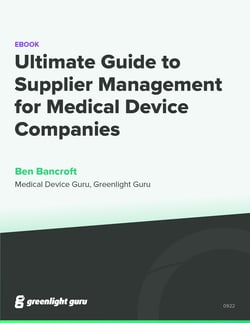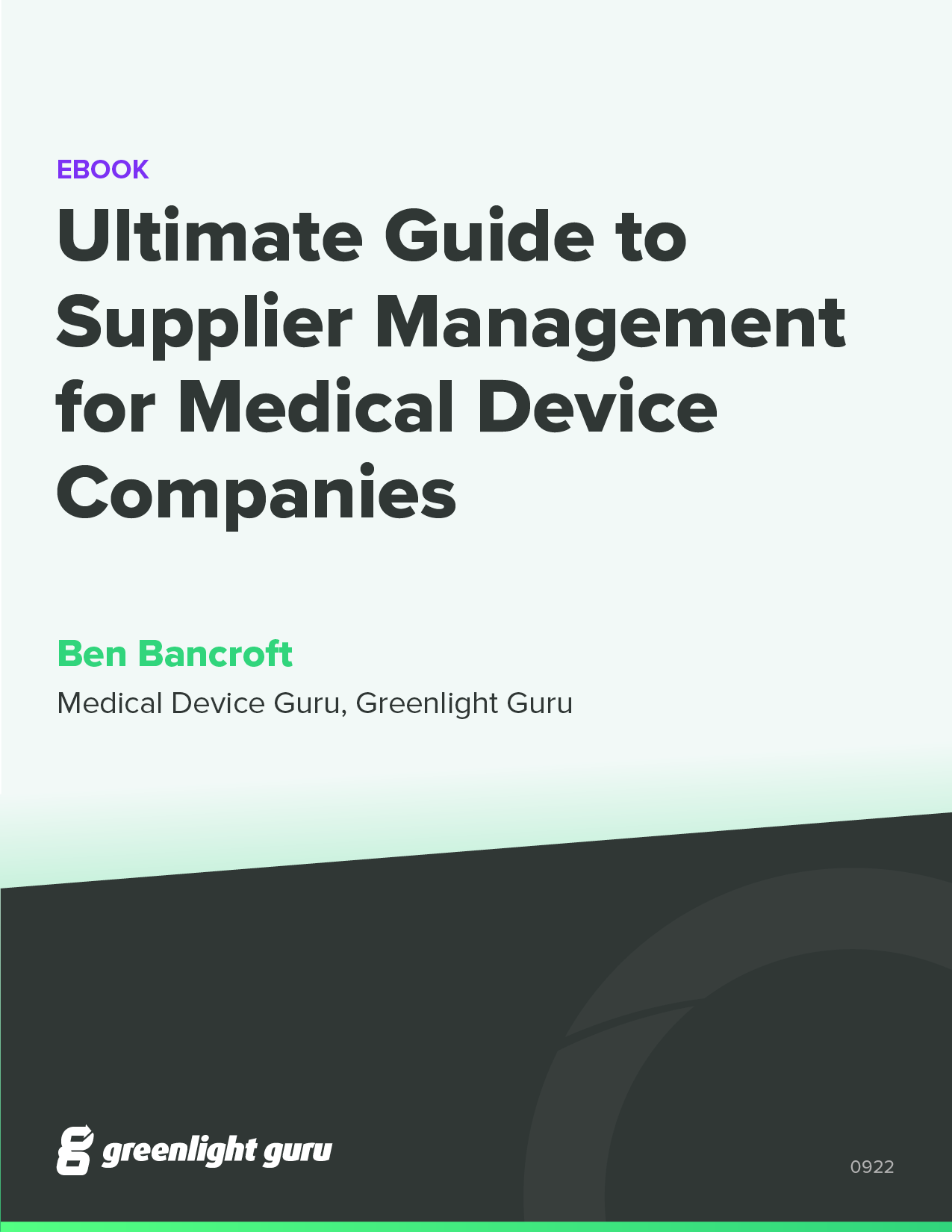The Difference Between Managing Product & Services Suppliers in MedTech

Both the FDA’s Quality System Regulations and ISO 13485 require medical device manufacturers to implement purchasing controls. The goal of those controls is to ensure that anything you purchase from a supplier meets your specified requirements.
But it’s important to keep in mind that your suppliers include more than simply those sending your parts. A consultant, a contract manufacturer, or a pest control service are all suppliers, as well. The difference is simply that they are supplying you with services, rather than products.
And while that may not seem like a big difference, it will change the way you approach supplier management to some extent. The regulatory requirements don’t change, but the way you fulfill them may.
So, let’s walk through the differences between product and service suppliers, and how you’ll approach each of them from a supplier management standpoint.
Supplier management for product suppliers
Product suppliers (also known as item suppliers) provide the parts and components you use to build your medical device. These are generally the suppliers that first come to mind when we talk about supplier management.
During the qualification process for these suppliers,
You may then send out a questionnaire to evaluate potential suppliers, getting to the bottom of questions like:
- Can they meet the exact specifications for the product we need, e.g., material and dimensions?
- Can they supply the volume of that product we need? Will they be able to grow with us as we scale?
- Do they have a documented quality system in place?
- Do they have a supplier management system in place for their suppliers?
- Are they certified to any standards, like ISO 13485 or ISO 9001?
Depending on the level of risk the supplier represents to your product, you may perform an onboarding audit to verify their QMS meets your requirements and they can handle working with a company in a highly regulated space. You may also need to audit their facility on a regular schedule, which is also based on their risk level.
On top of all that, you’ll put in place a formal agreements such as:
-
A quality agreement that contains the high-level overview of your responsibilities and those of the supplier.
-
A no-change clause that ensures the supplier can’t make a change to the product or service without informing you a certain amount of time in advance.
-
An audit clause in which your supplier agrees to submit to an audit from your notified body (if you are marketing your device in the EU).
As you work with them, you continue to evaluate them by tracking performance data, such as
- Delivery dates and quantities
- Any nonconformances in their product
- Customer complaints related to their product
- Communication and responsiveness
Based on their performance in the categories you track, you can determine whether a supplier continues to meet your needs or you need to look elsewhere.
Supplier management for service suppliers
When we talk about service suppliers, we’re talking about the providers of services such as:
- Contract manufacturing
- Sterilization
- Calibration
- Pest control
- eQMS provider
Evaluating and managing service suppliers follows a similar pattern as doing so with product suppliers, and you should still take a risk-based approach to qualification. But there are some differences you need to keep in mind as you choose and work with service providers.
For one thing, the criteria you use to evaluate service suppliers will focus on the service they’re providing and how and when they provide it. The question may not be whether a supplier can perform the service you need them to, but whether they can reliably provide the service according to your schedule.
You’ll need answers to questions like:
- Can they perform the specific service we need them to?
- How long are their lead times? If we have a problem, how quickly will they start working to solve the issue?
- Are they certified to any standards (such as ISO 17025 for calibration)?
Auditing service suppliers can also be more difficult than auditing product suppliers. While some service providers, like contact manufacturers, may be ISO 13485 certified, others may not be. That means you may need to examine what type of documentation or traceability they already perform, and ask whether they’ll be able to do additional requirements on your behalf.
Your formal agreements may also look a little different with service suppliers. Many service providers work on a subscription basis, so you may have a 12-month rolling contract with them.
The agreement should also specify the scheduling and lead times for their services. Structure and clarity in these agreements is key, as you don’t want to be without a critical service because of an oversight in your formal agreement.
Of course, you’ll still need to monitor their performance and collect data, though the metrics you track will often differ from a product supplier. These may include:
- Timeliness of service
- Issues with the service supplied
- Communication and responsiveness
As you can see, there’s plenty of overlap between the activities for qualifying and managing service suppliers and product suppliers, but the differences are significant enough that you’ll need to keep them top-of-mind as you go through these processes.
Greenlight Guru facilitates strong supplier management and performance
With your supplier agreements and monitoring procedures in place, your organization needs a robust quality system for managing and storing all of your supplier management records. It’s something you will be audited for—supplier management has always been a frequent source of audit findings and continues to be closely looked at by auditors and inspectors.
Greenlight Guru facilitates the best possible supplier management experience with full traceability in the only QMS software designed specifically for medical devices. You can keep your documented procedures and evidence of your evaluations easily accessible and always up-to-date to ensure the most optimal supplier management with less stress and effort on your part.
Get your free demo of Greenlight Guru today!
Benjamin Bancroft is a Medical Device Guru at Greenlight Guru who enjoys working on audits, CAPAs and Root Cause Analysis. He is a Quality and Regulatory Manager who began his career maintaining the QMS for multiple companies as a CAPA and audit SME. He enjoys helping customers successfully navigate regulations to...
Related Posts
Approved Supplier List: How To Add Suppliers to Your ASL in 7 Steps
How To Vet Medical Device Distributors in Multiple Markets
Ultimate Guide to Supplier Management for Medical Device Companies
Get your free eBook PDF
Ultimate Guide to Supplier Management for Medical Device Companies










